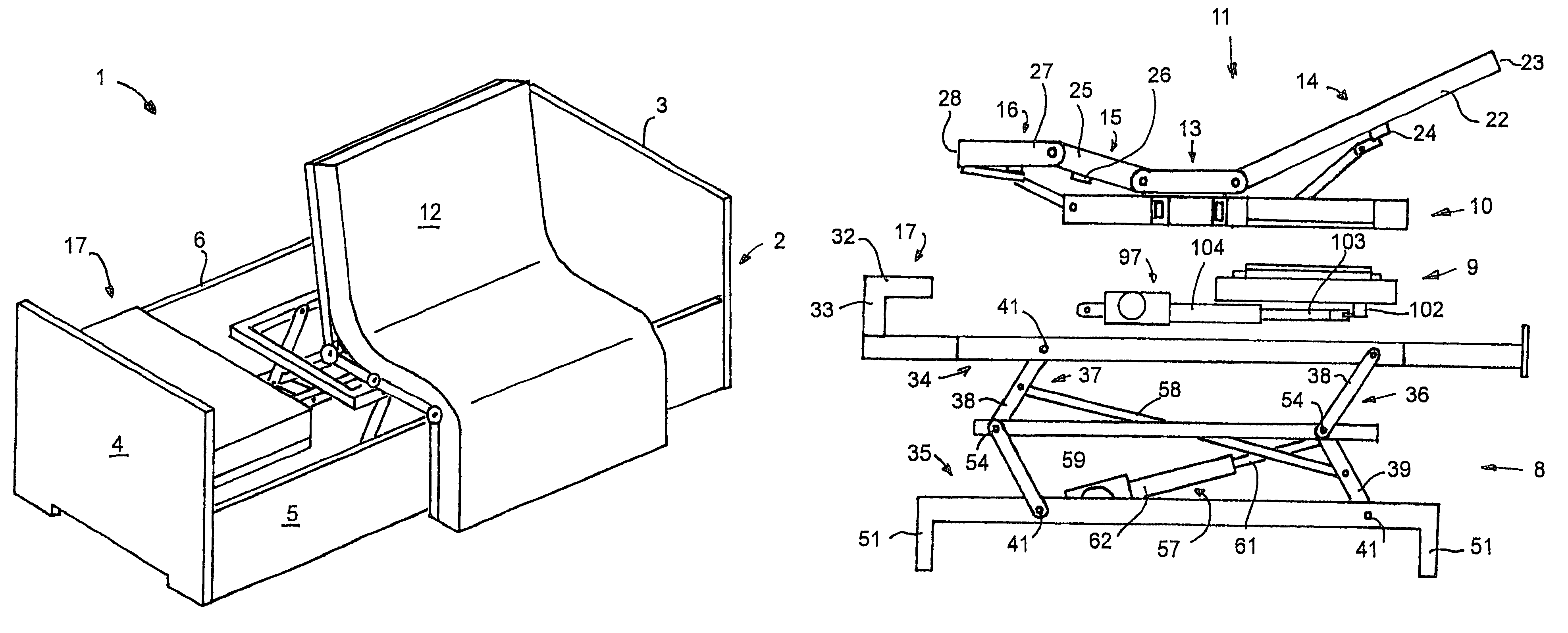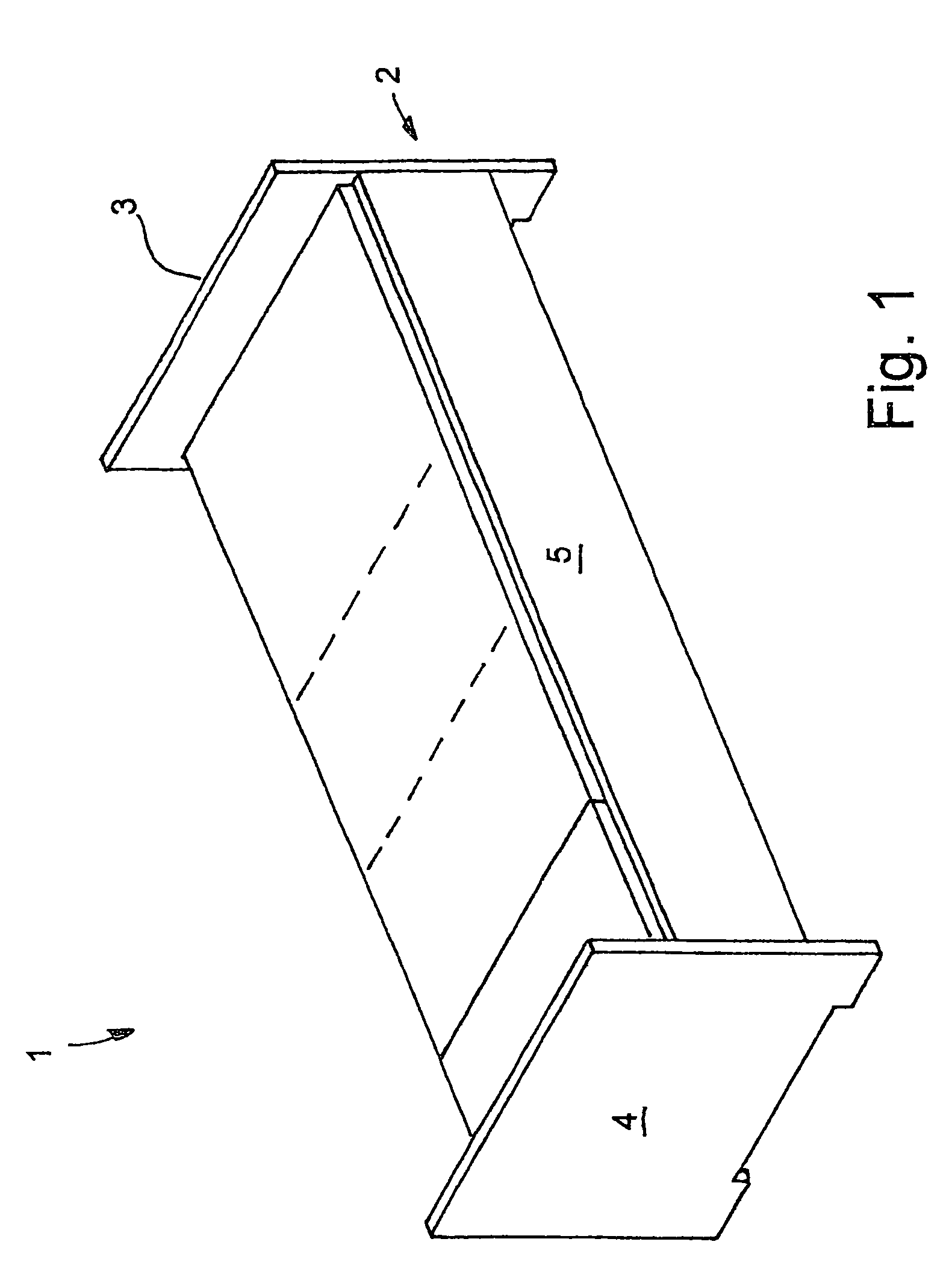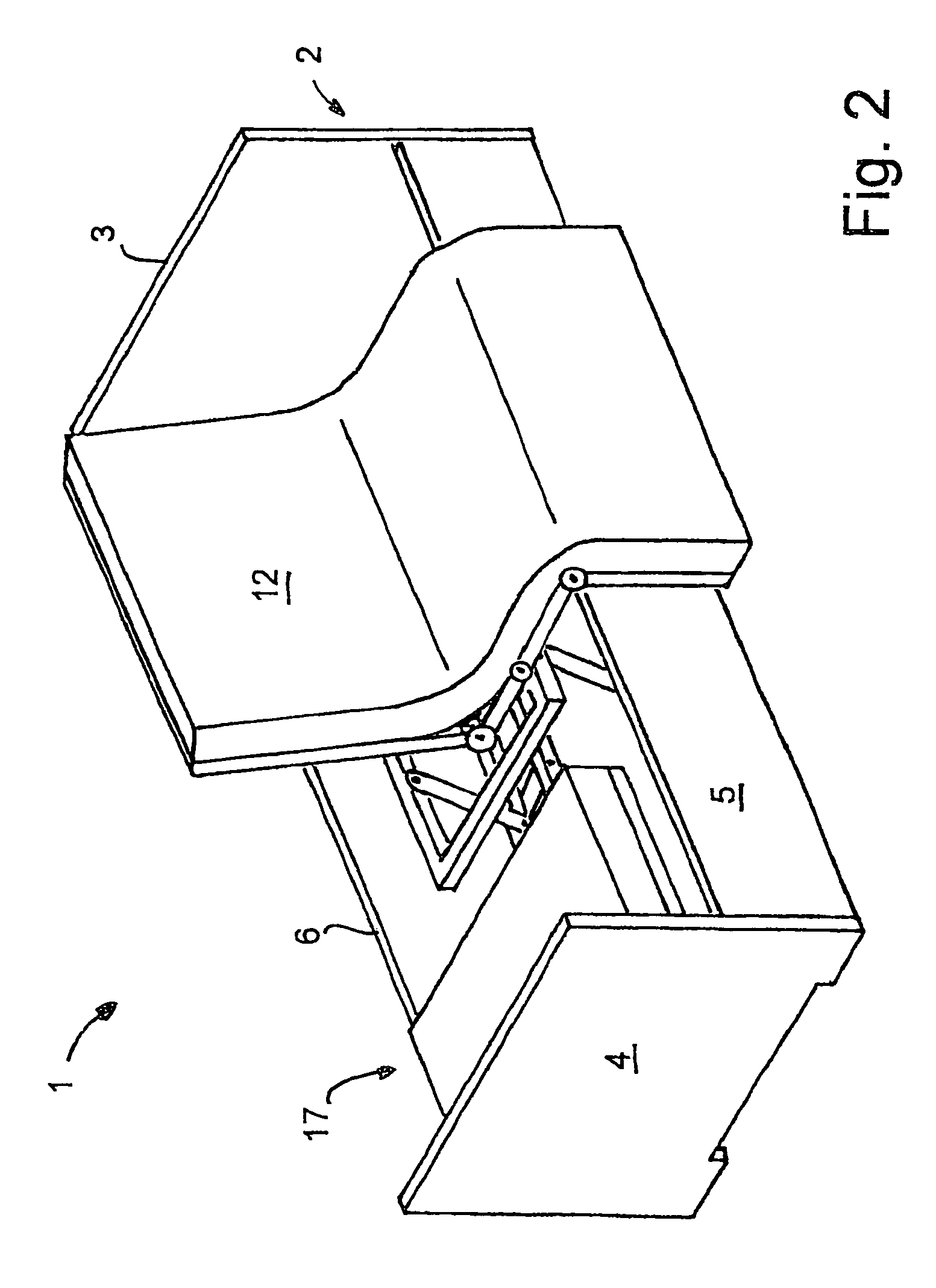Rotary bed comprising an improved rotary hinge
a technology of rotary bed and hinge, which is applied in the field of rotary bed, can solve the problems of preventing the base from being set, reducing the clearance between the reclining frame and the head end of the bed, and reducing the structural height of the rotary hinge, so as to eliminate the danger reduce the clearance between the reclining frame and the head end of the bed, and reduce the risk of pinching and cutting points
- Summary
- Abstract
- Description
- Claims
- Application Information
AI Technical Summary
Benefits of technology
Problems solved by technology
Method used
Image
Examples
Embodiment Construction
[0039]FIG. 1 provides a perspective view of a nursing bed 1 in the reclining position, while FIG. 2 illustrates the nursing bed 1 in the sitting or chair position. The nursing bed 1 has a bed border 2 with a head part 3, a foot part, as well as side walls 5 and 6. The proximal side wall 5 with reference to FIGS. 1 and 2 is located in the reclining position as shown at a distance to the floor, whereby there is a gap that enables care personnel to place their toes under the bed, between the lower edge of the side wall 5 and the floor. The side wall 5 is supported so that it can move, and, in the chair position of the nursing bed 1, reach a position shifted downward, as can be recognized from FIG. 2. The special bearing of the side wall 5 is explained in detail, e.g., in DE 199 12 937 A1 the disclosure of which is incorporated herein by reference.
[0040]Within the bed border 2, there is a bed framework 7, as shown in FIGS. 3 and 4. The bed framework 7 includes a height adjustable base 8...
PUM
 Login to View More
Login to View More Abstract
Description
Claims
Application Information
 Login to View More
Login to View More - R&D
- Intellectual Property
- Life Sciences
- Materials
- Tech Scout
- Unparalleled Data Quality
- Higher Quality Content
- 60% Fewer Hallucinations
Browse by: Latest US Patents, China's latest patents, Technical Efficacy Thesaurus, Application Domain, Technology Topic, Popular Technical Reports.
© 2025 PatSnap. All rights reserved.Legal|Privacy policy|Modern Slavery Act Transparency Statement|Sitemap|About US| Contact US: help@patsnap.com



